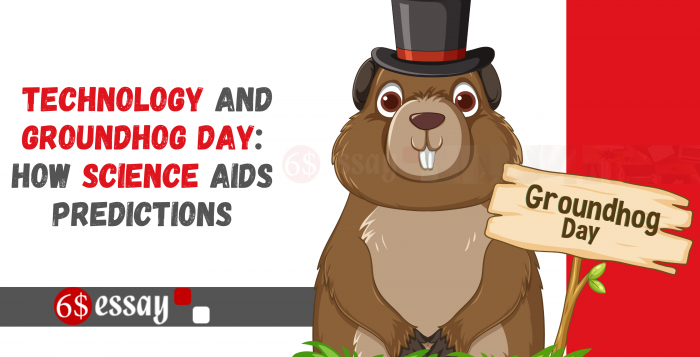February 2, 2024 2:47 pm
Victoria
News

Groundhog Day, a strange legend rooted in folklore, captures the publics attention almost every year. Although folklore suggests that a groundhogs behavior on February 2 can predict the coming weather, modern science and technology have reshaped our understanding of this tradition. In this article, we examine the intersection of technology and Groundhog Day, to know more about Technology and Groundhog Day, visit 6 Dollar Essay this website will never disappoint you exploring how advances in science support predictions and whether they are consistent with ancient folklore.
Groundhog Day Predictions Evolution
Traditionally, groundhog day predictions relied heavily on handlers observations of groundhog behavior. The emergence of new technology has introduced a more critical approach. Weather stations equipped with modern meteorological instruments now play an important role in predicting weather patterns. These stations collect data on temperature, wind behavior, atmospheric pressure and other factors, which contribute to more accurate and reliable forecasts.
Satellite and remote sensing
A notable contribution of technology to Ground Hawk Day predictions comes from the use of satellite and remote sensing technology. Satellites orbiting the Earth provide a comprehensive view of global weather patterns. This data helps meteorologists make more informed predictions about longer winters or the onset of early spring.
Remote sensing devices, such as airborne radars and ground-based sensors, supplement satellite data. These tools enable scientists to monitor specific local conditions, ensuring a more accurate understanding of the microclimates that groundhogs live in. With this wealth of information, meteorologists can improve their forecasts and provide more accurate insight into what the February 2 earthquake might indicate.
Computer models and predictive analytics
In recent years, the integration of computer models and predictive analytics has further enhanced Groundhog Day predictions. The latest algorithms process vast amounts of historical weather data, identifying patterns and trends that may influence future conditions. This analytical approach allows climate experts to make predictions based not only on current observations but also on the complex interactions of different environmental factors.
Weather models simulate different scenarios, helping scientists estimate the likelihood of specific weather outcomes. By feeding real-time data into these models, experts can create climate predictions that are beyond the capabilities of traditional methods. This technological leap has turned Groundhog Day predictions into a more data-driven and scientifically informed exercise.
Climate change and groundhog day
As technology advances, Ground Hawk Days predictions also face the greater challenge of climate change. The planets warming has caused changes in weather patterns, challenging the reliability of traditional folklore. Although ground waves may still exhibit some behavior on February 2, a more comprehensive analysis is needed in the broader water and air context.
Climatologists take advantage of climate models to understand long-term trends that may influence Earths Hawk Day predictions. This includes estimating changes in temperature, precipitation, and overall water and air patterns. As our water and air continue to evolve, it becomes increasingly important to integrate climate science into groundhog day predictions to provide accurate and relevant information to the public.
Public engagement and technology
Technology not only helps in the forecasting process but also increases public engagement with Groundhog Day. Social media platforms, live streaming, and mobile apps bring this tradition to a global audience. People can access real-time updates on ground forecasts, fostering a sense of community and a shared experience.
Virtual Reality (VR) and Augmented Reality (AR) technologies have taken Groundhog Day approximations to new heights. Users can immerse themselves in the virtual Groundhog bubble or experience the festivals as if they were on site. These technological innovations contribute to the cultural significance of Groundhog Day in the digital age.
Conclusion
Ultimately, the marriage of technology and Groundhog Day has transformed this ancient tradition into a more scientifically based and technologically driven event. From satellites providing a birds-eye view of global weather patterns to computer models unraveling the complexities of climate change, science has become an essential part of predicting what the ground may say on February 2. As we embrace the advancements that technology brings to Groundhog Day, it is important to appreciate the blend of tradition and innovation that defines this annual celebration.



